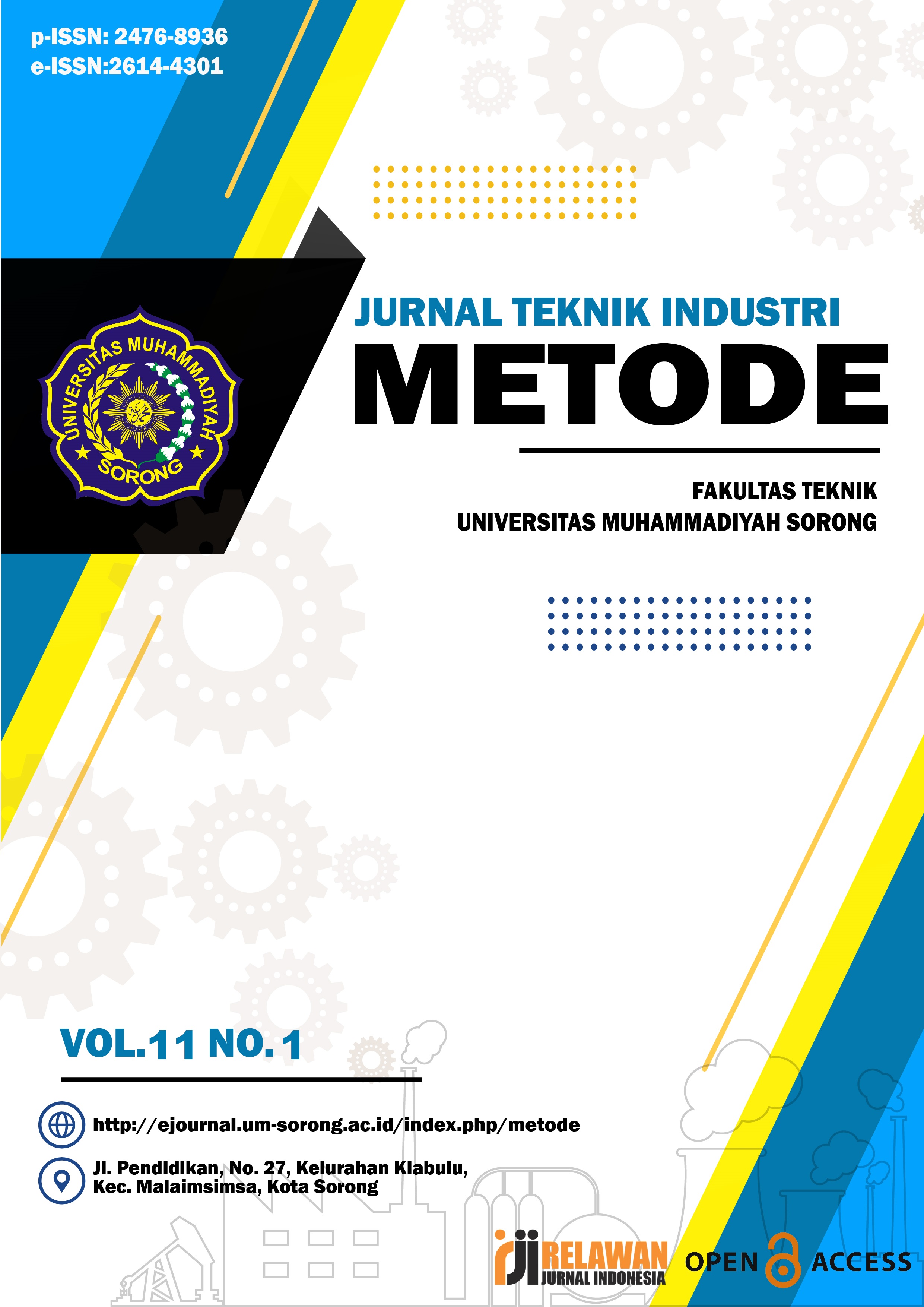Implementation of Failure Mode and Effect Analysis for Minimizing Defects
DOI:
https://doi.org/10.33506/mt.v11i1.3746Keywords:
Biscuits, FMEA, Quality ControlAbstract
Currently the problems being faced by PT. XXX Medan is a biscuit defect that exceeds the standard defect limit desired by the company, namely a maximum of 5%. Based on these conditions, it is necessary to resolve the causes of biscuit defects using the Failure Mode and Effect Analysis (FMEA) method. The results of the Cause and Effect Diagram and FMEA analysis that have been carried out, it is known that the highest RPN value is 320, namely the oven temperature changes causing the biscuits to not be cooked perfectly, so it is necessary to control by checking the cooking temperature parameters on the oven machine display so that they always match the temperature. which are expected. Improvements need to be made to the SOP by establishing a system for checking the machine display every certain time during cooking so that the temperature value does not change. The response to the cause of this failure is continuous maintenance.
References
Adar, Elanur dkk. (2017). The Risk Analysis By Failure Mode And Effect Analysis (FMEA) And Fuzzy FMEA Of Supercritical Water Gasification System Used In The Sewage Sludge Treatment. Journal Of Enviromental Chemical Engineering 5(1), 1261-1268. Yildiz Technical University
Andiyanto, S., Sutrisno, A., & Punuhsingon, C. (2017). Penerapan Metode FMEA (Failure Measure and Effect Analysis) Untuk Kuantifikasi dan Pencegahan Risiko Akibat Terjadinya Lean Waste. Jurnal Online Poros Teknik Mesin, 6(1), 45-57.
Assauri, S. (2011). Manajemen Produksi dan Operasi. Jakarta: Lembaga Penerbit FEUI.
Basuki, A. (2015). Manajemen Resiko Kerusakan di Unit Pengemasan PT. Semen Indonesia, Tbk, Pabrik Tuban. Prosiding Seminar Nasional Manajemen Teknologi XXII, A281-A286.
Dagsuyu, C., Gocmen, E., Narli, M., & Kokangul, A. (2016). Classical and Fuzzy FMEA Risk Analysis in Sterilization Unit. Computers & Industrial Engineering, 101, 286-294.
Desai, K. J., Desai, M. S., & Ojode, L. (2015). Supply Chain Risk Management: A Fishbone Analysis Approach. S.A.M. Advanced Management Journal, 80(3), 34-56.
Ellianto, M. S., Santoso, P. B., & Sonief, A. A. (2015). Usulan Penerapan Lean Six Sigma, FMEA dan Fuzzy Untuk Meningkatkan Kualitas Produk Botol Sabun Cair. JEMIS, 3(1), 28-34.
Ginting, R. (2019). Sistem Produksi. Yogyakarta: Graha Ilmu.
Hanif, R. Y., Rukmi, H. S., & Susanty, S. (2015). Perbaikan Kualitas Produk Keraton Luxury di PT. X Dengan Menggunakan Metode Failure Measure Mode and Effect Analysis (FMEA) dan Fault Tree Analyis (FTA). Jurnal Online Institut Teknologi Nasional, 03(03), 137-147.
Khoirunnisa, & Ganika, G. (2016). Analisis Kecacatan Produk Sebagai Upaya Perbaikan Kualitas Menuju Zero Deffect. Jurnal Manajemen dan Bisnis, 9(1), 121-135.
Luo, T., Wu, C., & Duan, L. (2018). Fishbone Diagram and Risk Matrix Analysis Method and Its application in Safety Assessment of Natural Gas Spherical Tank. Journal of Cleaner Production, 174, 296-304.
Setiawan, I. (2014). FMEA Sebagai Alat Analisa Risiko Moda Kegagalan Pada Magnetic Force Welding Machine ME-27.1. ISSN 1979-2409, 7(13), 31-41.
Sinulingga, S. (2019). Metode Penelitian. USU Press.
Wessiani, N. A., & Sarwoko, S. O. (2015). Risk Analysis Of Poultry Feed Production Using Fuzzy FMEA. Procedia Manufacturing, 4, 270-281.
Wibowo, M. M., Pratikto, & Wijayanti, W. (2016). Pendekatan Lean Six Sigma, FMEAAHP Untuk Mengidentifikasi Penyebab Cacat Pada Produk Sandal. JEMIS, 4(2), 185-197.
Downloads
Published
How to Cite
Issue
Section
License
Copyright (c) 2025 Jefry Restu Agusti, Uun Novalia harahap, Yetti Meuthia Hasibuan

This work is licensed under a Creative Commons Attribution-ShareAlike 4.0 International License.









